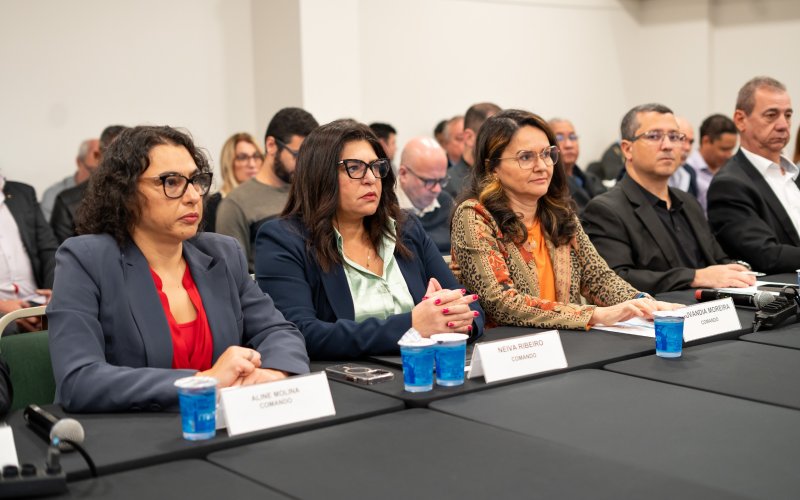Marilia Ortiz, Director of Public Policy (USP-EACH) and Master of Public Administration and Government (FGV-EAESP) and Minister of Finance of Niterói
Francisco Foncia, Economist and Master of Political Economy (PUC-SP), Professor of Economics and Medicine Courses and Doctoral Student in Management at USCS, Vice President of the Brazilian Association of Health Economics and Minister of Finance at Diadema
In this time of the Covid-19 pandemic, the Unified Health System (SUS) has been widely advocated and publicly appreciated by the population. More than ensuring the right to free health care and coordinating the national immunization program, we are talking about a global reference public policy. It is the largest health system in the world with over 200 million inhabitants with free access to various health treatments and services. But how much does this system cost?
According to data from Siops (2019), the cost of the SUS amounted to 303.3 billion, the proportions of funding are divided as follows: 42% in the federal budget, 26% in the states, 32% in the municipalities. We are talking about 1.4 thousand reais per person in Brazil annually and 3.97 reais per person per day. Internationally, the value of this consolidated public spending on health in Brazil is much lower than in other countries or in private plans.[1]
By way of comparison, Brazil invested only 3.8% of its GDP with the Public Health Network, and global systems such as Canada, Spain and the United Kingdom, respectively, invested 7.7%, 6.5% and 7.9% of GDP in 2015 according to data from the WHO Worldwide (WHO).[2] If the underfunding of a system of the size of the SUS is insufficient from a comparative perspective, Professor Áquilas Mendes also highlights that the proportion of spending by the Ministry of Health in relation to GDP has been around 1.7% of GDP since 1995.[3]
12 years after the promulgation of the Federal Constitution, marked by instability in the SUS funding process[4], the Constitutional Amendment 29/2000 established mandatory floors as a right, with the amount committed in the previous year to the federal government being plus the variance of nominal GDP; For states and municipalities, respectively, 12% and 15% of tax revenue and tax transfers.
A review scheduled for only five years in 2012, was regulated by Supplementary Law 141, which preserved these rules for calculating floors, but was devised by defining what is and what is not an expense with public health procedures and services to account for these. Floors.
But, starting in 2015, two constitutional amendments—86 of 2015 and 95 of 2016—changed the calculation rule for the Federal Floor of the SUS: the first adjustment at 15% of the union’s current net revenue (plus an inclusion of expenses in order to account for this minimum of expenditures equal to 0.6% of the current net revenue of individual parliamentary amendments and loss of the additional application requirement to the minimum revenue share of pre-salt revenue); A second 20-year floor freeze applied to the value of this rule for 2017, the latter reducing federal enforcement in public health measures and services, as verified later.
What actually happens is that states and especially municipalities are investing more than the minimum. According to a study by Funcia and Bresciani[5], municipalities, which account for a minimum of 15% of revenue, spent an average of about 24% in 2016 and 2017.
The impact of the increased involvement of subnational entities in health financing has been felt mainly from the promulgation of the Constitutional Amendment on Expenditure Caps (EC 95/2016), which limited public spending for 20 years, i.e. until 2036, to the amount of 2016. In the case of health and education , merging this ceiling with the fixed minimum value of 2017, with only inflation corrected.
Experts have dubbed this effect “health underfunding,” considering the following analyses:
- There was a decrease in the minimum per capita value from BRL 565.00 to BRL 558.00 and the per capita expenditure amount from BRL 594.00 to BRL 583.00 in 2017-2019, calculated at 2019 prices;[6]
- The general rule of reimbursement of primary expenses, in practice, limits the possibilities of application in the field of above-ground health to a reduction in expenditure in other areas, turning the floor into a ceiling;
- The exception to this requirement initially occurred in 2020, when the opening of extraordinary credits to deal with Covid-19 eased compliance with the general ceiling on initial expenditures; However, if expenses for dealing with Covid-19 are deducted from the application in health, the value of the federal floor of the SUS will not be reached in 2020, that is, there was another decrease in the federal demand per capita. ;[7]
- The exception was maintained again for 2021, as Covid-19 worsened, but, for this, the Federal Government chose to consider the “unforeseen” expenditures for Covid-19 response actions and, therefore, allocate budget resources through opening from extraordinary appropriations that It is not included in the initial expense ceiling.
Since the issuance of the “Expense Ceiling” amendment, the union’s participation in SUS financing is decreasing: in 2017, it was 43.2%, and in 2019, it increased to 42%. In 2017, states contributed 25.7% and in 2019 their participation increased by 0.8 percentage points to close at 26.5%. The proportion of municipalities rose from 31.1% to 31.5% – an increase of 0.4 percentage points.[8]
It should be noted that of the total tax burden in Brazil of 31.6% of GDP in 2020, 21% was with the federal government, 8.5% with states and only 2.1% with municipalities (STN, 2021). Thus, the “unfunding” of the SUS by the federal government has a significant impact on fiscal health and the ability to expand investments in other areas of the states, primarily municipalities, given their lower participation in the tax-collection pie. Therefore, given the need to increase public spending on health in Brazil to bring it closer to its application in other countries, it is up to the federal government to increase its participation in SUS financing.
In 2020, with the outbreak of the Covid-19 epidemic and pressure from spending different orders as a result of health and social care policies, the situation of federal health funding shortfall is becoming more serious. 40 temporary measures were issued, making available $673.5 billion in exceptional credits to combat the epidemic, but health remained less than 10% of this amount (63.7 billion Brazilian reals, according to Cofin / CNS 2020-12-31), of which has not been R$21.6 billion earmarked for vaccines will be used exclusively in 2020 and transferred (budget funds reopened) in 2021.
Even in the face of this participation from the federal government, subnational entities have had to significantly expand their participation in financing their health policies, given the slow and erratic transfers from the National Health Fund to state and municipal health funds.[9]
The impact of this situation of federal SUS not funding states and municipalities can be well illustrated by the reduction in the resources transferred to these union entities to fund health measures and services to combat Covid-19 in the first quarter of the year. 2021 compared to the third quarter of 2020 – respectively, less than 17% and less than 63%.[10]
Many analysts considered this year’s annual federal budget law to be a piece of fantasy, as it did not include a single penny for the expenditures needed to combat the Covid-19 epidemic, not even in the Ministry of Health. , Reality imposes itself on municipal entities. Municipalities are receiving demands of all kinds from residents affected by the effects of the pandemic and suffering from the effects of neglect and the lack of governance needed to confront this serious health crisis.
The CPI revealed details of the federal government’s shortcomings in managing the crisis. The lack of funding for the SUS over the years and the lack of prioritization for making resources available to the SUS, especially to states and municipalities in this context of acute crisis, reinforces neglect and disregard for the maintenance of the world’s largest public health system and the most important right: the right to life.
grades
[1] See the comparative table at: https://www.assecor.org.br/index.php/download_file/4971/6981/. [2] Watch: https://www.who.int/data/gho/data/indicators. [3] Watch: https://www.scielo.br/j/sausoc/a/SQy6jTcM9j4q6c4RRmwmbmh/?lang=pt. [4] Watch:.
[5] Watch: http://www.anpad.org.br/abrir_pdf.php?e=MjYwNzM=. [6] Watch: [7] Watch: http://idisa.org.br/domingueira/domingueira-n-10-abril-2021 [8] Watch: [9] This note was provided by authors Francisco Foncia, Rodrigo Benevides, and Carlos Aoki in 33 issues of the Cofin/CNS Bulletin prepared for the National Health Council Budget and Finance Committee. Bulletins are available at: http://conselho.saude.gov.br/boletim-cofin [10] Watch: http://www.susconecta.org.br/cns-considera-como-preocupante-orcamento-do-ministerio-da-saude-no-primeiro-quadrimestre/references
Funcia, Francisco R. Sistema Único de Saúde – 30 Years: From Chronic Underfunding to the Identification Process Resulting from Constitutional Amendment No. 95/2016. In: ANFIP – National Association of Tax Auditors of the Federal Revenue of Brazil. 30 Years of Social Security – Advances and Setbacks. Brasilia: ANFIP, 2018.
Marques, Rosa. Piola, Sergio. Roa, Alejandra. Brazil’s health system: organization and financing. Rio de Janeiro: Abras; Brasilia: Ministry of Health/Decid; PAHO/WHO, 2016.

“Friendly zombie guru. Avid pop culture scholar. Freelance travel geek. Wannabe troublemaker. Coffee specialist.”






